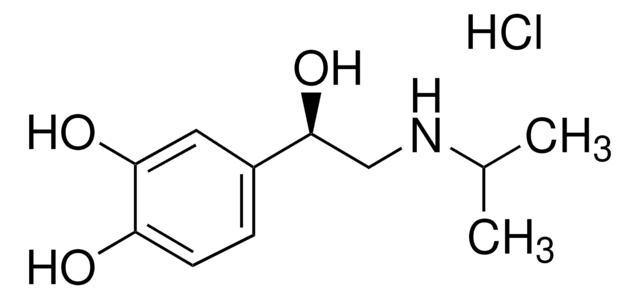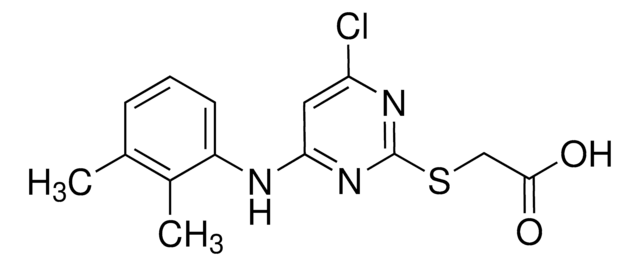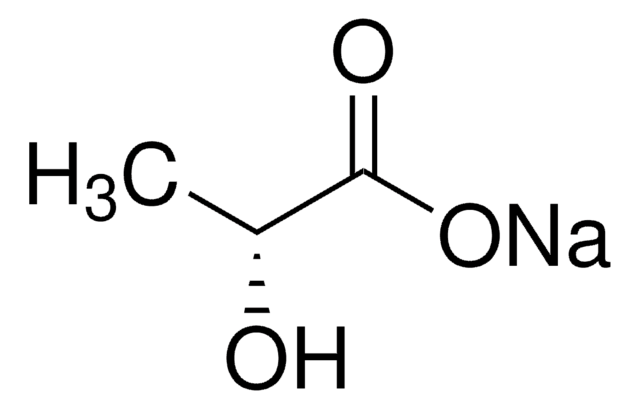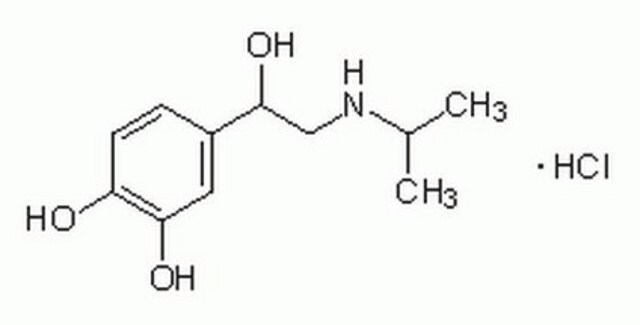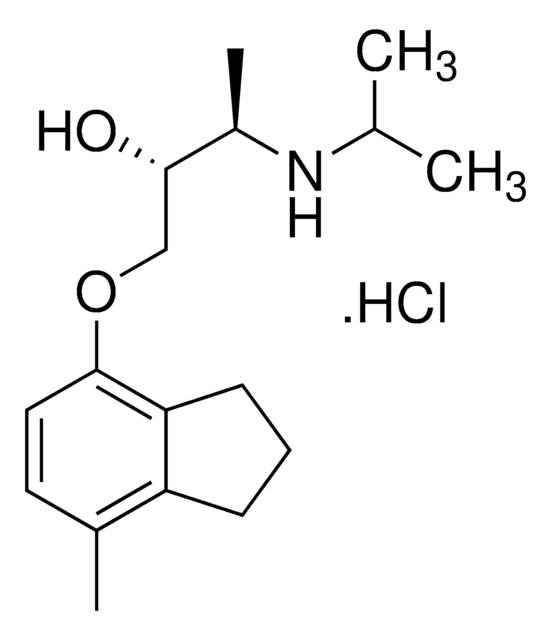C5976
CL 316,243 hydrate
≥98% (HPLC), powder, β3 adrenoceptor agonist
Synonym(s):
Disodium 5-[(2R)-2-[[(2R)-2-(3-Chlorophenyl)-2-hydroxyethyl]amino]propyl]-1,3-benzodioxole-2,2-dicarboxylate hydrate
About This Item
Recommended Products
Product Name
CL 316,243 hydrate, ≥98% (HPLC), powder
Quality Level
Assay
≥98% (HPLC)
form
powder
color
white to beige
solubility
H2O: 10 mg/mL, clear
originator
Wyeth
storage temp.
room temp
SMILES string
O.[Na+].[Na+].C[C@H](Cc1ccc2OC(Oc2c1)(C([O-])=O)C([O-])=O)NC[C@H](O)c3cccc(Cl)c3
InChI
1S/C20H20ClNO7.2Na.H2O/c1-11(22-10-15(23)13-3-2-4-14(21)9-13)7-12-5-6-16-17(8-12)29-20(28-16,18(24)25)19(26)27;;;/h2-6,8-9,11,15,22-23H,7,10H2,1H3,(H,24,25)(H,26,27);;;1H2/q;2*+1;/p-2/t11-,15+;;;/m1.../s1
InChI key
BFEWLXURNRQQLY-BELDDISZSA-L
Gene Information
human ... ADRB3(155)
Looking for similar products? Visit Product Comparison Guide
Application
- as a β-agonists to inject mice and study its effect on the expression of mammalian major facilitator superfamily domain-containing protein (Mfsd2a)
- as an adrenergic agonist to stimulate adrenergic response in order to study the metabolic activity of brown, beige and white adipose tissues in mice
- as a β3-adrenergic agonist to inject mice for in vivo lipolytic challenge
Biochem/physiol Actions
Features and Benefits
Storage Class Code
11 - Combustible Solids
WGK
WGK 3
Flash Point(F)
Not applicable
Flash Point(C)
Not applicable
Personal Protective Equipment
Choose from one of the most recent versions:
Already Own This Product?
Find documentation for the products that you have recently purchased in the Document Library.
Customers Also Viewed
Our team of scientists has experience in all areas of research including Life Science, Material Science, Chemical Synthesis, Chromatography, Analytical and many others.
Contact Technical Service






